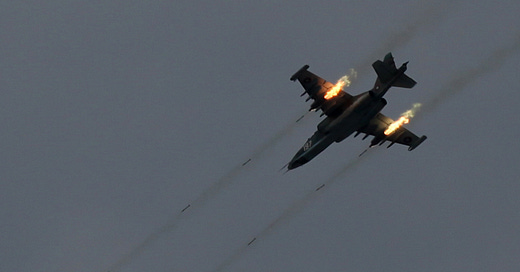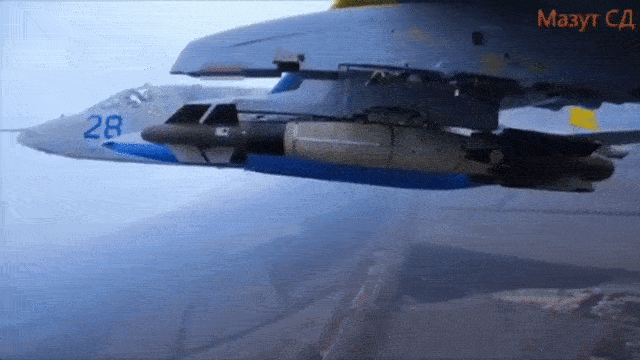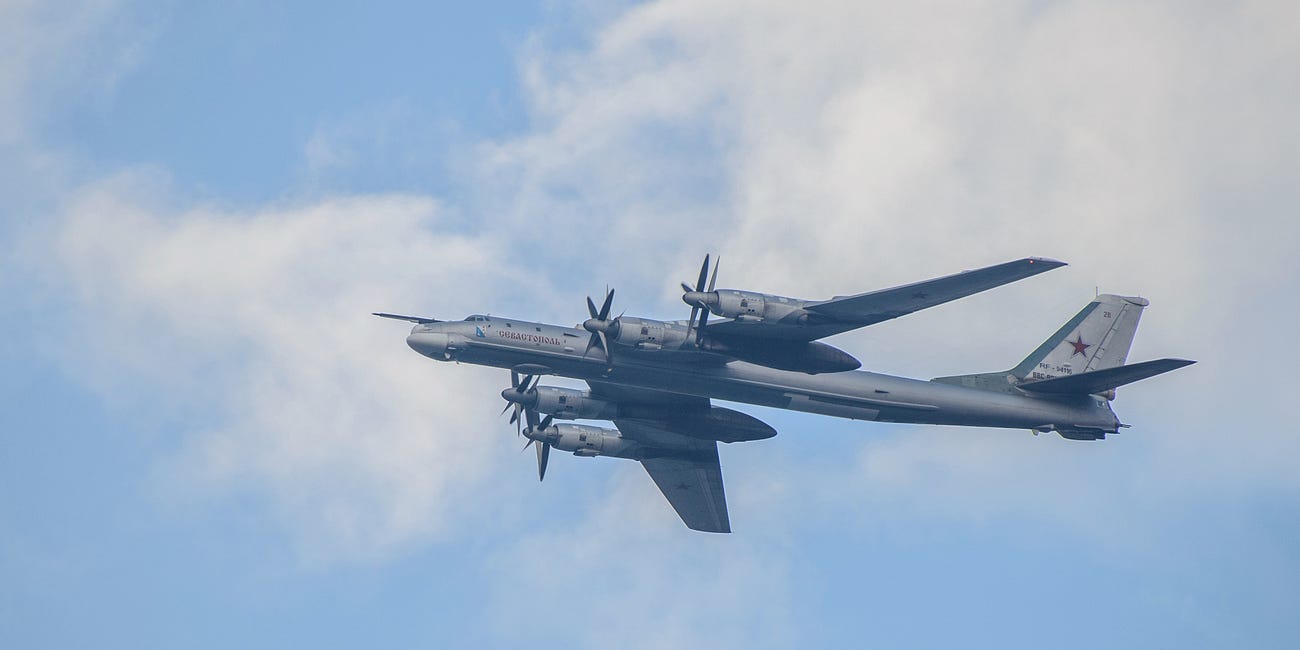A Russian Su-25 Attack Jet Just Shot Down ... a Russian Su-25 Attack Jet
Close attacks with unguided rockets are extremely unhealthy for Russian attack pilots
The Russian air force can’t afford to be shooting down its own Sukhoi Su-25 attack jets. The subsonic planes and their pilots have had a hard, hard war—and it’s only getting harder as attrition shrinks the fleet, compelling fewer planes and crews to fly more often to sustain their attacks.
On or just before Friday, a section of Russian Su-25s was performing one of its usual low-level rocket runs somewhere over the 700-mile front line of Russia’s 40-month wider war on Ukraine when something went tragically wrong.
One of the pilots fired his unguided rockets in the flight path of his wingman. The second jet exploded and tumbled to the ground. A parachute may have been visible in the video of the incident. (See above.)
It was the 39th confirmed Russian Su-25 loss of the wider war—and it further reduced an Su-25 force that had nearly 200 airframes prior to the war, but now may have just 100 or fewer once you add attrition from accidents and fatigue.
“The type has fared in a mediocre way while also suffering from significant losses and the survivors experiencing a lot of wear and tear,” Alexander Mladenov explained in Combat Aircraft. “Furthermore, the excessive attrition, combined with the non-descript battlefield achievements, is set to threaten the Su-25’s medium-term future.”
The more Su-25s the Russians lose to Ukrainian missiles—and to their own rockets—the clearer it should become to Russian commanders. Without major changes to the type’s equipment and tactics, the Su-25’s days are probably numbered in Russian service.
Flinging rockets, tossing bombs
It’s one of the weirdly iconic images of the Ukraine war: Russian and Ukrainian helicopters and attack jets flying low over the front line and then abruptly nosing up and loosing unguided rockets in high arcs.
As the rockets disappear into the distance, destined to impact miles away, the firing aircraft dives low and turns hard—all in a desperate effort to stay outside the range of the enemy’s most dangerous short-range air-defenses.
Russian Su-25s, operating in pairs from a constellation of air bases east and north of the Ukrainian border, typically fly high-low-high profiles while packing a pair of underwing fuel tanks and two rocket pods, each with five 122-millimeter S-13 rockets.
The load-out lends an Su-25 just enough range to travel the 400 miles or so to and from the front. A dangerous, one-hour mission to fire 10 unguided rockets.
Early in the wider war, the lob-and-pray attack method befuddled Western observers who were accustomed to watching U.S. and NATO warplanes fly high over the uncontested air space of, say, Iraq or Afghanistan and leisurely drop precision-guided bombs.
To Westerners, the pitch-up rocket attacks—while justified by the comparative crudeness of many Ukrainian and Russian warplanes and the sheer density of air-defenses along the Ukrainian front—might have seemed like a waste. Those rockets were surely flying wide.
Not so, according to Alexander Shishkin, a retired Russian navy officer. Shishkin explained the tactic—and the logic behind it—on his blog. It turns out these rocket attacks aren’t necessarily inaccurate.
“It seems that their circular-error-probability is no worse” than with other attack methods, Shishkin wrote. Launched at a 20-degree angle between 2.4 and 3.2 miles from the target, a volley of S-13s should deviate no more than 50 feet from the aim point, he explained.
But there’s no disputing that the relatively short range of the rockets exposes the Su-25s to extreme danger from short-range surface-to-air missiles, even if the lobbing tactic somewhat mitigates that risk by doubling the rockets’ range. And there’s no disputing it’s risky to spray unguided rockets near your wingman.
In 40 months, the Russians have lost nearly 40 Su-25s—a fifth of their pre-war fleet. To be fair, the Ukrainians have lost 22 of their own Su-25s—more than half of their pre-war fleet of around 43 jets.
But while adding an extra 18 airframes from Macedonia and Bulgaria, the Ukrainians adapted to preserve the reconstituted fleet—and to keep it relevant. They transformed their surviving Su-25s into precision bombers.
In 2024, the Ukrainian Su-25 force apparently completed a major overhaul of its tactics, ending the practice of close rocket attacks in favor of standoff bombing with precision glide-bombs including 550-pound, French-made Hammers. (See GIF above.)
The upgraded Su-25s fly low and fast toward the front line, hugging the terrain to avoid detection by Russian air-defense batteries. At the last moment, before releasing the winged bombs, the planes climb.
The higher angle and extra altitude extend—by miles—the range of the precision-guided munitions. A Hammer can travel farther than 40 miles under optimal launch conditions.
To be fair, the conditions over Ukraine are rarely optimal. But it’s likely Ukraine’s Su-25s are now launching attacks from tens of miles away—a potentially fivefold increase in standoff range relative to the ballistic rocket attacks.
The switch to precision bombing has undoubtedly saved a lot of Ukrainian Su-25s and their pilots. Just three or four of the 22 Ukrainian Su-25 losses occurred last year. There have been no losses this year.
The Russians have their own glide munitions, of course. But if they’ve modified their surviving Su-25s to carry the UMPK glide-bombs, there’s scant evidence of it. There’s ample evidence Russian Su-25s are still flying close attack missions with unguided rockets—with increasingly dire results as Su-25s get shot down … or shoot each other down.
Read more:
Russia's Surviving Bombers Are Evacuating—Away From Ukraine's Deadly Drones
A great migration is taking place across Russia as the Russian air force’s surviving strategic bombers flee—largely to the east, away from Ukraine and the growing threat from Ukrainian drones.






